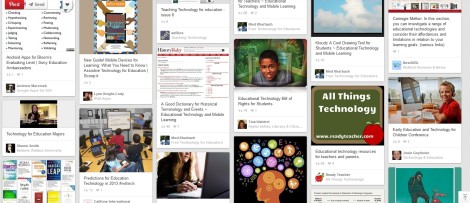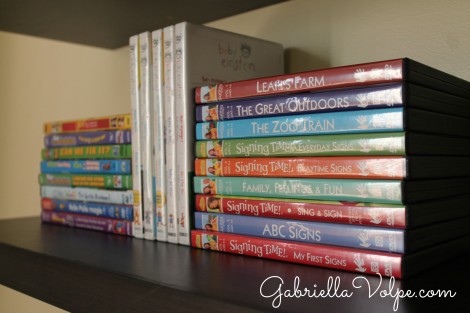This article is part of the 31 Days of Pinterest Hacks series. Find the main page for this series here.
Today, like never before in our history, technology is a huge benefit to neurodivergent and disabled individuals. From tablets to smartphones, from apps to voice activated technology, there is no shortage of tools to assist a learner in their daily and academic activities. As helpful as it can be, technology has some drawbacks for neurodivergent and disabled children.

If you’re going to use Pinterest for technology inspiration, search for articles that educate you to better use it for communication and learning.
Why technology may be a challenge for neurodivergent and disabled children
- Some children need support in understanding the functionality of technology.
- Some children may become fixated with technology, making separating the child from technology a challenge.
- Children requiring fine motor support may have difficulty with manipulating technology.
A word about my experience with technology
While I consider myself to be pretty tech-savvy, I’m not an AAC (Augmentative and Alternative Communication) therapist, nor do I claim to be. Consult with the child’s therapists about the best technology for the child. The tips I share below are some of the takeaways I’ve learned both by being in the classroom and by being a mother to a disabled child.
Suggestions for using technology with a neurodivergent or disabled child
- Consult an AAC specialist or an SLP. Talk about the goals for communication for the child with specialists. If the ultimate goal is to get a child to carry around a handheld device to communicate with the rest of the world, ask the child’s therapists where you can begin to get them there successfully.
- Consider two tablets. If you find that the child is tempted to go to other apps, consider using a second tablet for communication only.
- Educate yourself. In the resources below, I list a few places to begin.

Educational DVDs make me feel like my child is learning while I prepare dinner.
- Television as technology. Although television now seems like a dinosaur, there is definitely a positive in terms of using it for learning purposes. I limit TV usage to about 1 to 1 ½ hours per day with my son. If TV keeps him calm, I might as well make it a learning experience. My son loves Signing Time – and even “asks” for the one he wants when I give him the choice between two. While he enjoys ½ hour of Signing Time, I rush to get a 30-minute meal ready in the kitchen. Win-win.
Resources
Websites
Inov8 – A local-to-Quebec consulting business that offers services to families and schools “to integrate highly effective assistive technology tools into their lives.”
Moms with Apps – Website with tons of information for making choices about apps.
HelpKidzLearn – Website and shop for apps for kids. Some are free and can be used with a switch.
AAC App
Proloquo2go – A communication app that “enables people to talk using symbols or typed text in a natural-sounding voice that suits their age and character.”
Apps for Literacy, Writing, and Language
Scene Speak – App where you can create your own ebook, add your own voice, and comprehension questions. Good for kids who cannot read to themselves.
Read&Write for Google Chrome – Writing made easier by TextHelp. Make documents, web pages, and common file types in Google Drive more accessible.
Epic! – Explore 40,000 books, audiobooks, and learning videos
Apps for Fine Motor Skill-building
Pic Collage – FREE app. Helps with fine motor practice as you have to cut out images with a finger, then paste. You can add words to make it a language-based activity as well.
Ready to Print – App that acts like a worksheet to help kids learn to write/ print. It was developed by an OT for kids with fine motor difficulties.
App for Social Stories
Pictello – App that helps you create visual stories and talking books. Great for social stories.
DVD Series
Signing Time – Rachel Coleman has created an empire of educational signing videos teaching the basics of ASL.
Accessories for Technology
iPad Mounting System – Great for kids who like to toss items on the floor. Can be clamped to a chair, table, or adaptive equipment. US-based.
Mounting Systems (Canada) – Bridges Canada has various mounting systems for Canadian clients.
BigTalk Accessories – Many uses for these items for kids who are non-speaking. Can record your own voice, a song, a phrase.
iPad Wireless Switch – Interacts wirelessly with iPad. For kids who cannot use a mouse but can tap to get input.
What questions/concerns do you have about technology?

Very useful post! Thank you for the links I hope to take a look into soon.
I do confirm it is good to keep one piece of assistive technology for communication purposes exclusively. Using the same tablet for Youtube and then for work can create frustration for both the child and parent. I think the analogy to a previous post you made in the lines of “once his tray is attached to his chair, the only thing on his mind is food” does apply to assistive technology (ie. I see this tablet, I want Youtube)
You have summed it up perfectly, Chantal. It’s a double-edged sword because on the one hand, we want our children to learn to communicate using the latest devices, but on the other hand, we don’t want to be spending $600+ on a video play box. I can justify paying that amount when it’s for learning and for helping my child communicate, but not if he only wants to use it for listening to music and watching videos. At the moment, I’m delaying the purchase to see if he’ll be developmentally ready (with time) to use it without fixation.
I would also suggest prAAACtical AAC . org as an invaluable resource to any family using aac.
Yes! That is a great site! Thanks for sharing that, Jasmin.